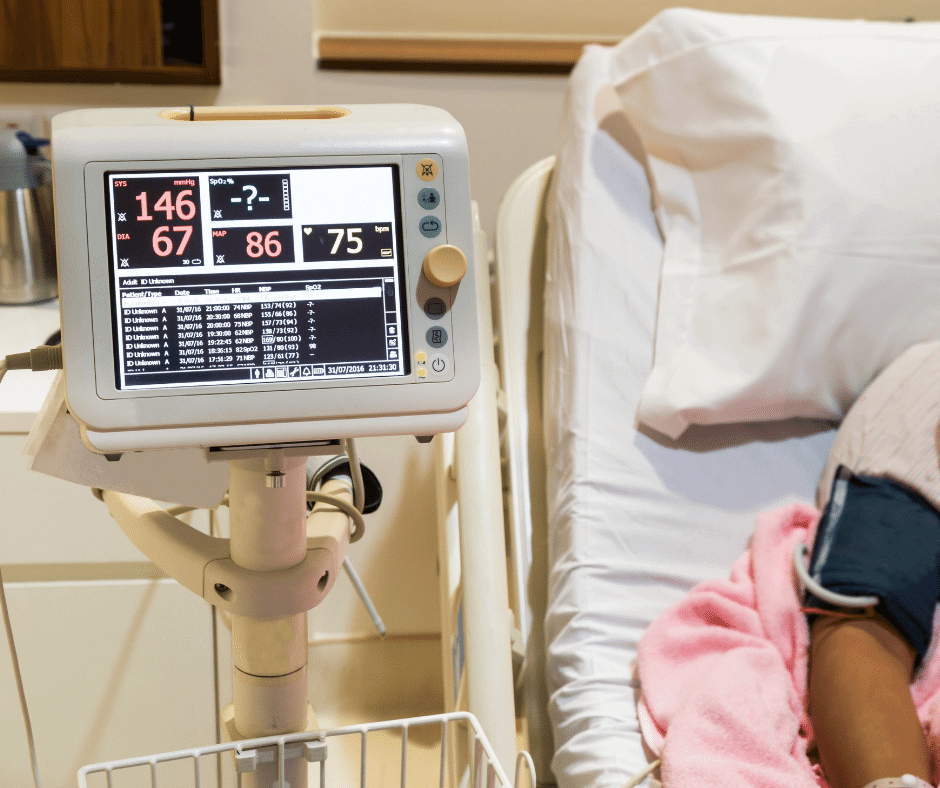Patient monitoring systems nowadays offer an ample array of healthcare solutions. From clinical healthcare to personal use, healthcare monitors evolve to satisfy new needs, and so does their basic structure and components. This continuous state of evolution often constitutes a challenge when trying to classify and group them in the context of the Mexican regulatory framework.
In this article, we will discuss what a patient monitoring system and their accessories constitute, as well as general guidelines on their classification and grouping.
Patient Monitoring Systems
Patient monitoring systems can comprise diverse technical fields, extending from healthcare monitors to telemedicine systems, with an ample offering of solutions and products. For this article, we will be focusing exclusively on the healthcare monitors generally used in clinical and healthcare settings.
A healthcare monitor is a device designed to continuously track and record vital health parameters, such as heart rate, blood pressure, oxygen saturation, and other relevant metrics. Standard healthcare monitors are compact, lightweight, and often equipped with sensors that can monitor basic patient parameters, such as ECG, heart rate (HR) oxygen saturation (SpO2) and non-invasive blood pressure (NIBP). As the need for surveillance of more complicated or delicate parameters evolves, so does the technology of the healthcare monitor. Examples of this can be an MRI compatible healthcare monitor, or monitoring of central venous pressure (CVP).
Classification and Grouping of Patient Monitoring Systems
As discussed in our Classification and Grouping Ultimate Guide, the first assessment to make when classifying and grouping patient monitoring systems is to take into account its intended use, and in this particular case, the accessories that come with the monitoring system. Different intended uses can determine the classification of monitoring systems, and accessories, in some specific situations, can modify the grouping of certain products or families of products.
Most patient monitoring systems fall under the Class II medical devices. This type of systems often includes the most basic healthcare environment solutions, such as a monitoring system of basic parameters, used as bedside or portable monitors.
Patient monitoring systems that have an intended use in which the surveillance of the parameters of the patient pose a life-threatening situation fall under the Class III medical devices. These types of monitors include patient monitoring systems used in Intensive Care Units (ICU), or ambulance monitoring systems.
Modular healthcare monitors are a special case that needs to be addressed separately. They must follow the previously mentioned guidelines for classification, but additional modules not included in the main device’s variant must be analyzed and registered separately. This is based on the premise that any module integrated into the basic device enhances its intended scope of use, making the module a medical device in its own right, and thus requiring its own sanitary registration.
Regarding grouping criteria, different variants of the same device can be included in the same sanitary registration, as long as they satisfy the following criteria:
- Same manufacturer
- Same intended use
- Same distinctive denomination (commercial name)
A rule of thumb is that different devices of the same family can be registered together, if they are commercialized as a different variant of the same device that offers “premium” or “basic” characteristics, such as:
- A different type of interface
- Touch screen
- Printing parameters availability
- Patient database
In respect of the accessories that can be included with the patient monitoring systems, a general recommendation is to perform a similar analysis of the intended use of the accessories by themselves, as to rule them out of being medical devices. The agreement with the list of products that are not considered medical devices can always be consulted to check if an accessory is not considered to be a medical device at first glance. Most accessories are commonly ruled as non-medical devices, and examples of them include stands, power cords and printing paper.
If an accessory to be included is considered a medical device, a case-by-case analysis is required. Often, two or more medical devices can be grouped into a system, but these kinds of groupings need specific attention and details to be analyzed. Generally, accessories that are needed for the main medical device to perform its intended use, and that are of exclusive use for that medical device, are allowed to be registered together. On the other hand, accessories that can be used with another type or brand of medical device are typically encouraged to be registered in their own sanitary registration. A common example of the latter situation is a pulse oximeter.
Conclusion
Classification and grouping of patient monitoring systems can become overwhelming when considering its different variants and included accessories. These guidelines can serve as a first approach when trying to discern between the many cases that can happen, and help with a solid and simplified perspective.
If you have any inquiries about the registration of patient healthcare monitors or any other medical devices in the Mexican market, please feel free to contact us at contact@veraqueconsulting.com, or check our guidelines and checklists.

